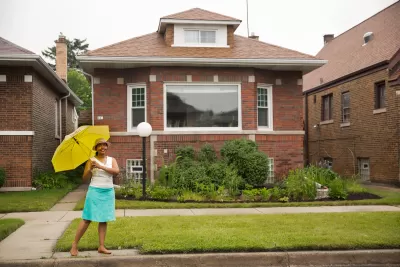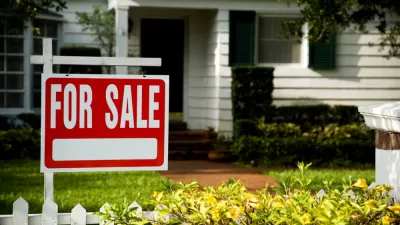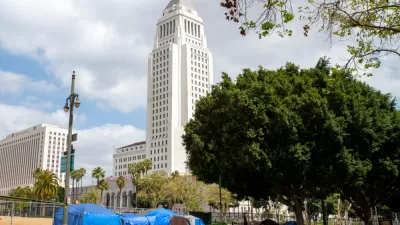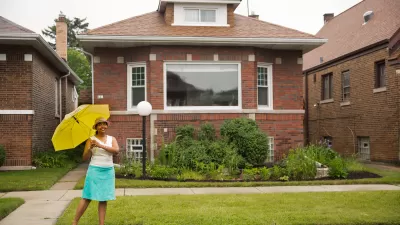Locations with majority black homeownership have plenty to teach about closing the country's home ownership gap.

Tim Henderson surveys the American real estate, which is generally defined by a gap in black homeownership, for examples of communities where black homeownership is the norm.
For example, Henderson begins the article with an anecdote from the city of Olympia Fields, Illinois, where the black homeownership rate is 98 percent, and a dramatic outlier compared to the rest of the country.
Nationally, the black homeownership rate is only 41 percent — virtually unchanged from 50 years ago, when the federal Fair Housing Act banned racial discrimination in housing. The national white homeownership rate is 71 percent. Incredibly, the gap between black and white homeownership rates is wider now than it was in 1900, according to a study released in April by Zillow, an online real estate company.
According to Henderson, there are four other lack-majority municipalities with homeownership rates of at least 80 percent—Flossmoor, Lynwood, Matteson and South Holland—proximate to Chicago and Olympia Fields. "That is no accident: In the 1990s, a group called Diversity, Inc. helped to boost black homeownership in the area by sending black and white buyers to home sellers to ferret out discrimination, and filing lawsuits when they were treated differently," explains Henderson.
The article expands its geographic reach for lessons about the historic causes of the gap in black homeownership and, in perhaps less well documented information, finds seeds for future success in the communities with majority black homeownership.
FULL STORY: Where Black Homeownership Is the Norm

Planetizen Federal Action Tracker
A weekly monitor of how Trump’s orders and actions are impacting planners and planning in America.

San Francisco's School District Spent $105M To Build Affordable Housing for Teachers — And That's Just the Beginning
SFUSD joins a growing list of school districts using their land holdings to address housing affordability challenges faced by their own employees.

The Tiny, Adorable $7,000 Car Turning Japan Onto EVs
The single seat Mibot charges from a regular plug as quickly as an iPad, and is about half the price of an average EV.

Seattle's Plan for Adopting Driverless Cars
Equity, safety, accessibility and affordability are front of mind as the city prepares for robotaxis and other autonomous vehicles.

As Trump Phases Out FEMA, Is It Time to Flee the Floodplains?
With less federal funding available for disaster relief efforts, the need to relocate at-risk communities is more urgent than ever.

With Protected Lanes, 460% More People Commute by Bike
For those needing more ammo, more data proving what we already knew is here.
Urban Design for Planners 1: Software Tools
This six-course series explores essential urban design concepts using open source software and equips planners with the tools they need to participate fully in the urban design process.
Planning for Universal Design
Learn the tools for implementing Universal Design in planning regulations.
Smith Gee Studio
City of Charlotte
City of Camden Redevelopment Agency
City of Astoria
Transportation Research & Education Center (TREC) at Portland State University
US High Speed Rail Association
City of Camden Redevelopment Agency
Municipality of Princeton (NJ)





























